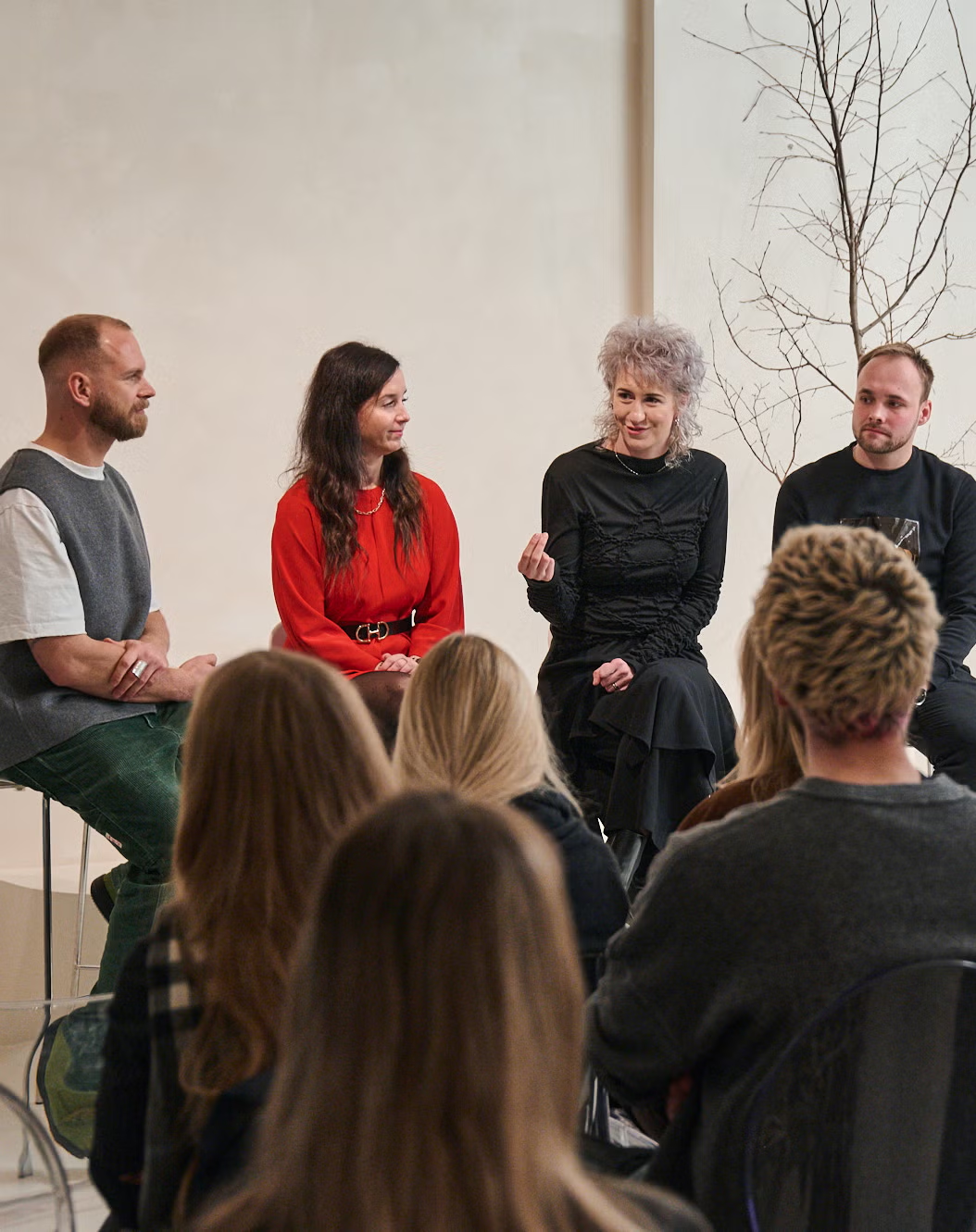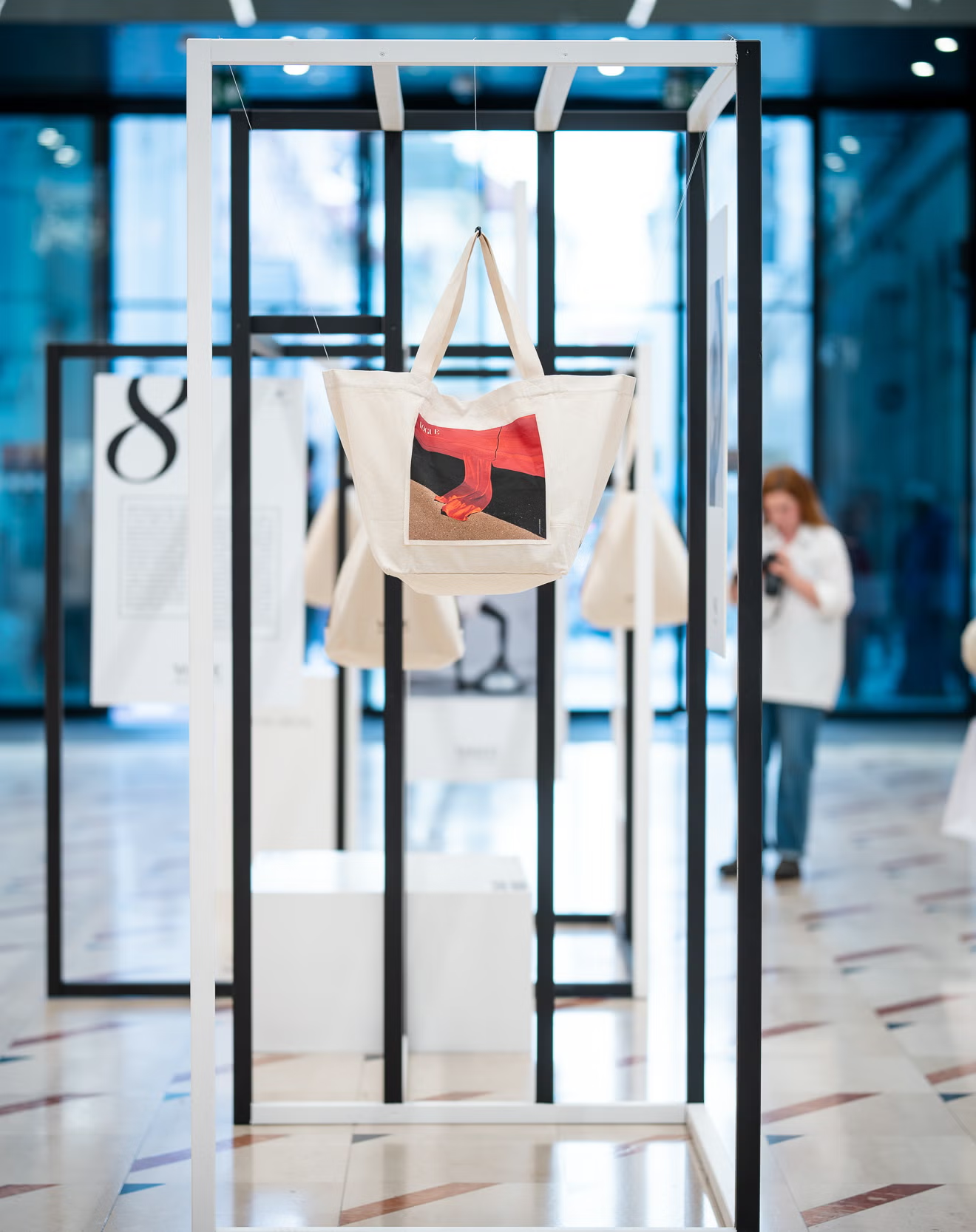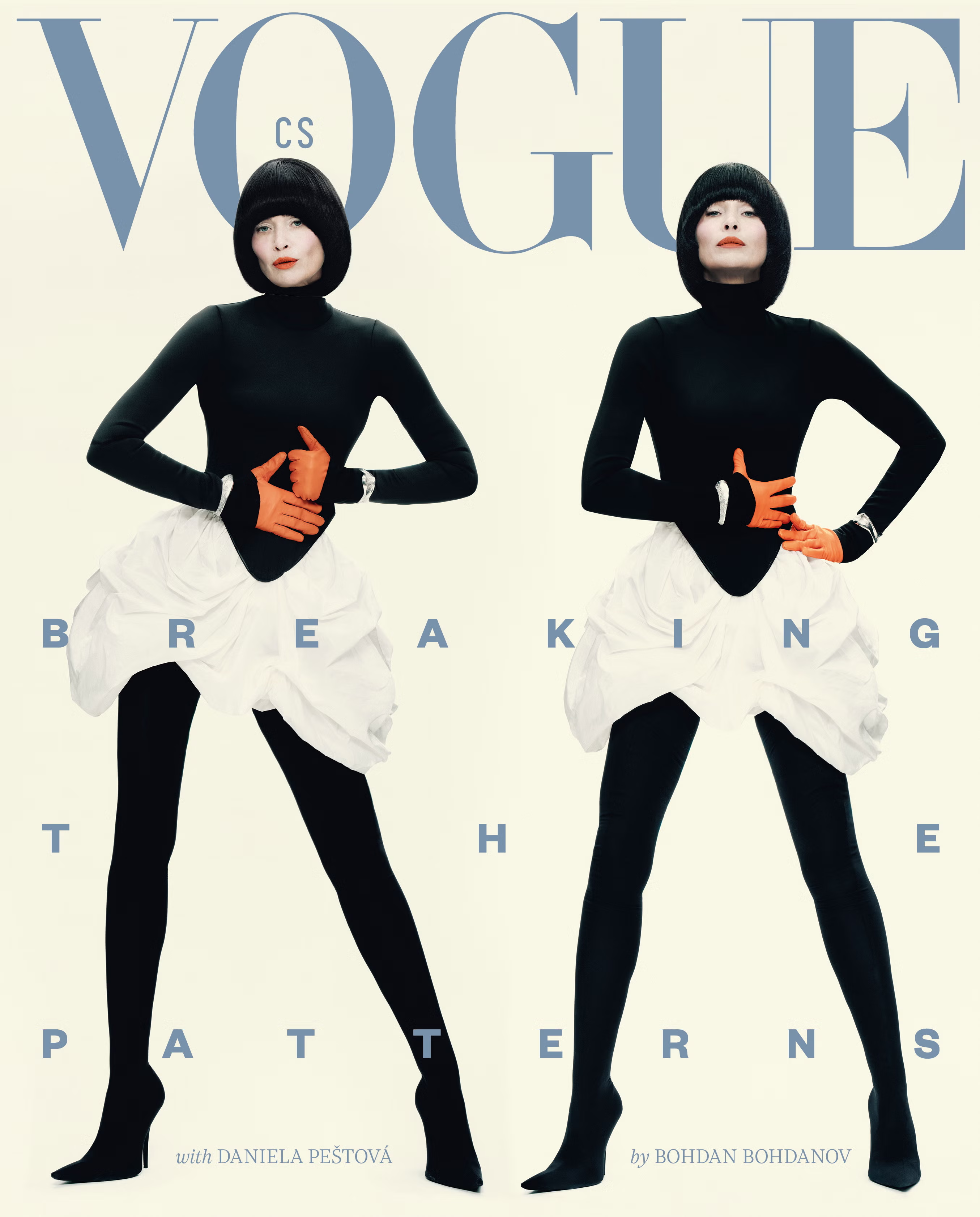Vogue CS in English
The higher the heels, the closer to God
Martin Váša23. 3. 2021
Mark Bryan has 410 thousand Instagram followers. And they all care for one thing: what heels and what skirt is this machine engineer from a small German town going to wear tomorrow? He is a fashion icon without really giving a damn about it, without even being particularly interested in fashion. Why him and why now?
He only started his Instagram profile last April and kept it private until October. Today he is followed by legends, such as Carine Roitfeld. “And Rihanna,” Mark adds when we are arranging the interview. “How about tonight? I will be at the hotel.” He makes a sad emoji. “I’m travelling to Berlin for a photo shoot. Is seven p.m. too late? I might even make it earlier, but I need to check first, I have fitting in the afternoon.” These aren’t words you’d expect from a sixty-one year old man living in Germany, half way between Nurnberg and Stuttgart, in a town of thirty five thousand who has been making living as a mechanical engineer in the past thirty years and in his spare time, you can find him either at the pitch where he trains American football or in his garage where he renovates his 1967 Porsche 911. “I’m just a married heterosexual guy who loves Porsche and beautiful women and enjoys including high heels and skirts into his daily outfits,” he writes in his bio.
It is Friday 15 January, 8 p.m., and Bryan finally joins the call. He is wearing a black hoodie, his head is shaven, his ears slightly protruding. In other words: if I hadn’t seen the interior of the Berlin Bikini Hotel, I would probably think that I was looking at myself. So how did it go today? “I’m sure you’re familiar with this tuff, since you work for Vogue yourself,” he says and it sounds like Miranda Priestly (“This…stuff!? “). He just got back from the fitting for tomorrow’s photo shoot for CR Men, the men’s version of a magazine established and managed by Carine Roitfeld, the legendary stylist and, amongst other things, the former editor of the French Vogue and Tom Ford’s right hand. I hope it’s going to be a cover story, I utter half-jokingly. “That would be great, but I don’t think I’m ready for a cover, I’m still new to this world.” I assure him that a photo shoot for CR is big. “Well, I did a photo shoot for Interview a few months back. People from the fashion industry keep repeating how lucky I am.” He is. He starts in magazines which are the top of the industry and which some don’t reach even after years of trying hard.
The internet connection is playing up. Before Mark reconnects we are flying to the one place the anti-corona measures can’t stop us from visiting – the past.
Come on out, girls and boys
Leaving out make-up, the skirts and high heels are fashion elements traditionally perceived as feminine. To understand why it is so we need to go back to mid-14 century. Until that point, both genders in Europe used to wear a tunic. From then on, women keep their tunics with a skirt almost all the way to the floor, while on men the tunic turns into a coat which is gradually getting shorter until it properly shows legs in tight trouser legs. With time, the trousers meet and connect in the pelvis area – and in come trousers – the garment traditionally perceived as men’s. That’s the truth – it was men who first started showing their legs. And they were helped in this by (wait for it) – heels. So if you were wondering what came first – the proverbial chicken or egg? – men were first to wear heels.
Never mind the century; I don’t want to overwhelm you with details. Let’s jump right to Versailles of 1701. Louis XIV is posing for the painter Hyacinthe Rigaud. The sovereign chose an outfit truly worthy of the Sun King for his eternalization: his hair is combed up so high that even Melanie Griffith in Working Girl could be jealous and short renaissance trousers with balloon legs reveal legs that… well, perhaps not Karlie Kloss, but Kate Moss could surely be jealous of. Louis XIV is wearing silk stockings in shoes with aristocratic red heels (and you thought it was Louboutin’s invention!).
Cat and mouse
Mark is online again. I let him tell me about his life. He takes train to work, because it’s more comfortable. I imagine myself walking in a skirt and heels to the train station in my home town on the border with Germany which has double the number of residents of Mark’s town. The mentality should be more or less the same then. Alas it does not end well in my imagination. Mark often takes selfies on the platform and he does not appear to have a problem. Why is it so? “At my age, I no longer care what strangers think of me. I probably won’t see them again. But it doesn’t happen very often that people would point at me or laugh at me, most people ignore me anyway. That’s the trick. Understanding that most people don’t care about you – and the rest might notice you but then get back to whatever they were doing before. I don’t see anything wrong in the way I dress. I don’t think I’m breaking rules. I feel free to do what I want – and this gives me the self-confidence which prevents others from attacking me. We people are predators, we see prey in those who are weak.”
In a hopeless effort to keep a decent internet connection, we switch the cameras off, so I suddenly talk to his profile picture. The photo is from waste up so I can’t see anything. I cannot tell if he’s wearing a skirt, but I’m pretty certain he’s got high heels on. He is standing in a specific way, kind of ballet-straight, elegantly. “My posture is better when I’m wearing high heels. As I’m getting old I’m sinking. But when I wear heels, I always stand straight and I also feel better because of it, I don’t feel old with heels,” he explains. “What am I wearing on the photo? The mint suit?” Yes. “I had the suit trousers remade to a skirt and I wear fuchsia pumps to match the tie.”
He talks about how he always had to have all his clothes clean, ironed and spotless and it is obvious he pays a lot of attention to his appearance. He apparently doesn’t know much about fashion, though. Which is odd, because he is wearing grey boots by Abra, a young designer from Paris, on one of his recent posts. Even though these boots deserve all the world’s attention, not even many of us from the fashion industry have heard of them. “Yes, he sent them to me a week ago; I arrived to Berlin in them today. I also had shoes sent by Louboutin. I don’t know if I’m pronouncing it properly, I’m not familiar with brands,” he admits shyly. “I know a lot of them are famous, I know of them, but I never had any, so I don’t know them well.” So Louboutin shoes must have been slightly out of the ordinary. “Well, they sent four pairs.
Those that I liked the most didn’t fit. I’m wearing a pair know, they are pretty, but quite honestly, I’m a bit disappointed; the red soles get damaged too quick. I wore them twice and the red has already rubbed off. One would think that after spending six or seven hundred euros on them… Well, they won’t be too thrilled when I send them back,” he laughs. What do you mean – back? “The Louboutin people said they were samples and I had to give them back. Yet they’re a total write-off. But Abra gave them to me. “
“Everybody loves wearing high heels. Isn’t it wonderful how small loss of stability gives you so much power? To me it’s a feeling similar to skateboarding or surfboarding,” Abra tells me later. “Mark also loves it and I admire him for admitting it – which isn’t common in men. Hopefully more and more people will start perceiving it as normal that clothes and shoes are products which needn’t be divided by sex, but by size.”
The garment apartheid
Why do we actually distinguish clothes by sex? Time machine vol. 2, the destination: nineteenth century. Please notice how men’s fashion becomes more modern, it is serious, sober, functional. Women’s fashion on the other hand remains decorative and opulent. This probably is where our notions of what each sex should or shouldn’t wear stem from. As I was once informed by Helena Jarošová, a fashion theorist, “this traditional European and actually discriminative rule, strictly distinguishing males and females was called fashion apartheid by Olivier Burgelin.”
It is hardly a wonder that fashion had been, from the beginning of emancipation, a strong weapon in the women’s arsenal. Surely we needn’t mention the 1920s and the role for instance Coco Chanel played with her almost boy-like aesthetics. The break of 1960s and 1970s again had a unisex feel. Unisex means the symbolic end of apartheid, Burgelin writes verbatim. And finally a leap to today: if I got a penny every time I wrote that the differences between men’s and women’s clothing are disappearing, I could get easily buy the Abra boots myself.
It’s a shame that hetero men don’t claim the wearing of high heels. Instantly the starting line would be a bit straighter.
Out of the blue
“I found him on the internet and instantly fell in love with him,” Carine Roitfeld responds to my question about Mark. “It is still very unusual to see men on high heels and in a skirt, but in his case it looks so organic. I know how heels can change the way you feel. I started wearing them when I worked with very tall photographers and wanted to talk to them face to face.” Unfortunately, Carine couldn’t take part in the Berlin photo shoot due to Covid-19. “But I would love to chat to him about what heeled shoes we like and how to cross your legs when wearing a skirt.”
What does she think the strong attraction of the big brands to Mark is propelled by? He is not really a fashionista. “They want to cooperate with him because it is exciting. He is different than other influencers. It is challenging to work with him because of his size, but it is worth it because he is new and unusual. Mark is a free man with a free mind, that’s why I value him. It isn’t easy being so bold. Even today when the fashion industry is much more willing to cast new types of people and erase the gender frontiers. That’s what makes Mark relevant. He gives the brands new perspective and aesthetics.”
The first time
Forget the image of a little boy stumbling in his Mom’s pumps; the first time Mark wore high heels was when he was twenty. They were his girlfriend’s and it was her idea. They did not become part of his everyday wear until four or five years back, though. Him and his wife were getting ready for a fancy dress party. Mark’s fancy dress? A fairy. (“Fairy… erm, not a fairy as gay, but fairy as a fairytale creature.”) His wife asked him if he would manage to walk on heels. The answer is obvious. “Everyone at the party told me it really suited me and admired the way I could walk on heels. There and then I realized I was enjoying it. I started to experiment – first with women’s Oxford shoes on a lower and thicker heel. I wore them to the office with trousers. Then I moved to higher heels and slimmer trousers, but by then my colleagues were already used to me wearing heels. They started challenging me to wear a skirt; this was a joke for about six months – until I finally came to work in a skirt. Nobody was really surprised; they were expecting it in a sense. Obviously, nobody behaved differently towards me. I’m still the same person, regardless of what I wear.”
He might be fixing his Porsche in his garage, but his stilettos can probably rival this expensive hobby of his. His shoe cabinet features about seventy pairs. “I haven’t spent that much,” he laughs. “Before becoming popular, the most expensive pair in my collection cost about sixty euro, but most of them were about forty.”
Speaking of popularity – how many people can brag about being followed by Rihanna? “My daughter who is a big fan of hers knew it before me. ’Dad, you’re followed by Rihanna!’ How was I supposed to know it’s her? She has a nick Badgal-something.“ (Editor’s note: the singers Instagram nick is Badgalriri .) “I thought it was cool. Then I spoke about it at the Interview photo shoot and everybody told me to write to her that I’d like to try the Fenty shoes. So I did write her a message: ’Hi, this is Mark Bryan, you probably don’t know me but are following me so you might, I just don’t know whether someone else answers your messages… but I would like to try your shoes and post it on Instagram.’ I got an answer in twenty minutes. ’That would be great, I’d love that!’ I asked her to send my daughter a private message in the meantime – and she did it. I think my daughter loves Rihanna more than me. I’m sure she did a screenshot and sent it to all her friends.” Quite honestly, who wouldn’t?
Did Mark expect in October that he would turn into such a sensation? “Not at all, I am still in shock. My number of followers shot from 200 to 250,000 in three months. That’s madness. I already did a photo shoot in Amsterdam, Stuttgart and Milano; this is my second shoot in Berlin. It is very new and exciting for me. Fashion is a strange world to me, very far from the world of robotic engineering.”
A star is born
A few weeks passed since our interview. Meanwhile Mark’s media popularity went through the roof. Apart from Interview and CR Men, he was also approached by the magazines Buffalo Zine, FGUK, Replica or the German edition of Vogue. He also appeared in the TV show Galileo by a ProSieben TV channel.
How many other heterosexual, manly looking and manly acting men do you know who wear a skirt and heels on a daily basis?
In my thoughts about fashion icons – current and past – I got to the very first one, the one who was a fashion icon even before fashion as we understand it now came to being. And I came to a conclusion that even Marie Antoinette wasn’t such a bitch after all. Perhaps her (unverified) words “let them eat cake” in its core wasn’t so much different from Dieter Rams “less but better”. Perhaps she was trying to suggest another alternative to her people, an unbeaten track which might eventually turn out to be better. Who said they had to eat bread?
One has to know him/herself perfectly to get rid of all the ballast we surround ourselves with just because we can, don’t you think?
Mark came at the moment when we spend most of our time at home and we have the opportunity to think and re-evaluate our lives. He doesn’t care which brand has a better sound, he is primarily after quality. He is being himself and authentic. This is the most important message of all. This is exactly what the world needs. And when I say the world, I mean the fashion industry, my bubble, in which the first icon featured the initials M. A. and the last one M. B.
Vogue
Doporučuje

Společnost
Investorky nepanikaří. Akce Vogue CS & Direct Investments přinesla nové pohledy na investování
tým VOGUE31. 10. 2025
Společnost
Nejlépe oblečené hvězdy na Vogue World 2025: Hollywood
Christian Allaire27. 10. 2025
Události
